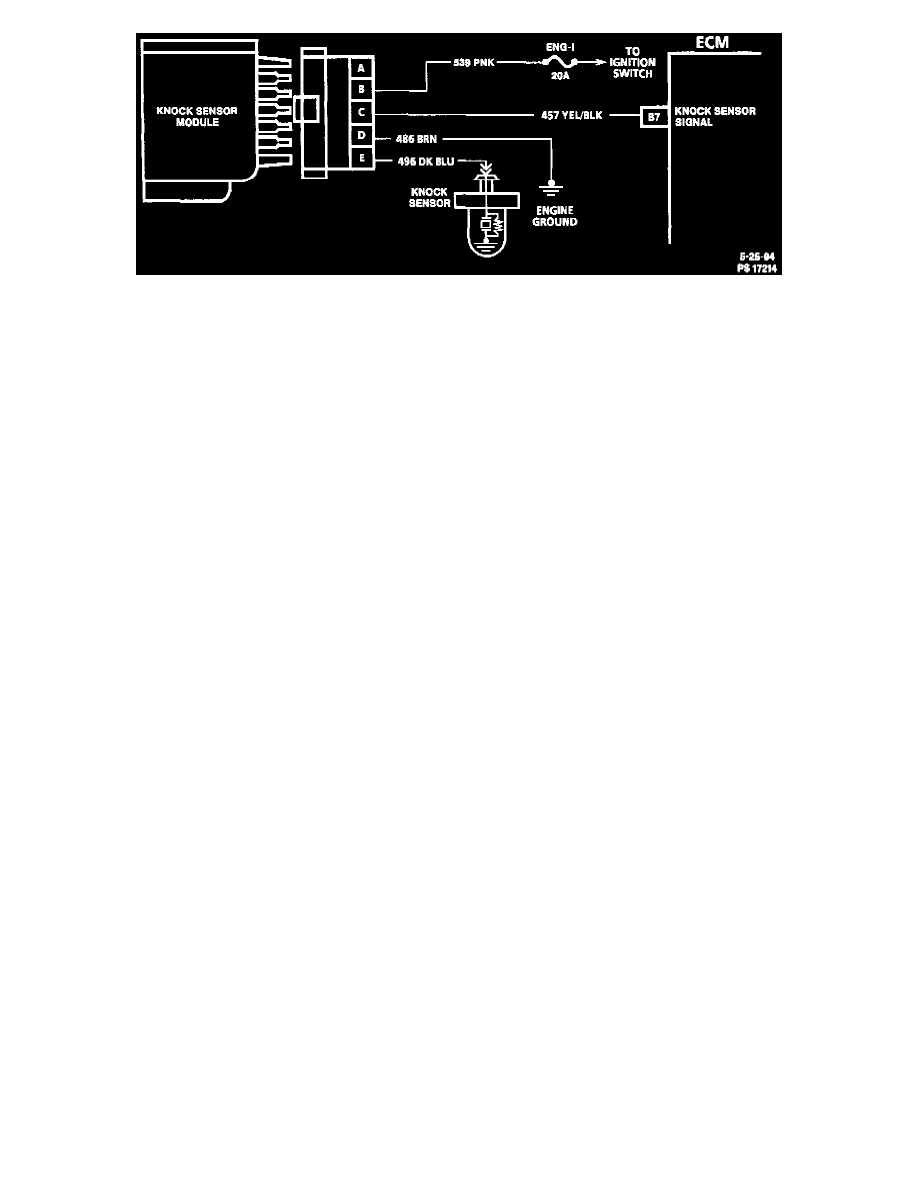K 2500 Truck 4WD V8-350 5.7L VIN K TBI (1995)

Knock Sensor Circuit
CIRCUIT DESCRIPTION
The Knock Sensor (KS) system has a module that sends a voltage signal to the ECM. As the knock sensor detects detonation, the voltage from the
KS module to the ECM will drop. This signal allows the ECM to retard timing. The ECM will retard the timing when knock is detected and rpm is
above 900 rpm. Diagnostic Trouble Code (DTC) 43 will set when the ECM has detected low voltage at CKT 457 on terminal "B7" for longer than
5 seconds with the engine operating or when the system has failed the functional check.
The ECM continually monitors voltage on CKT 457 on terminal "B7."
The ECM will advance the spark timing when:
^
Engine coolant temperature is above 95°C (203°F).
^
Engine is under heavy load (near WOT).
The ECM will then check the signal voltage at terminal "B7" to determine if knock is detected. If no knock is detected, the Malfunction Indicator
Lamp (MIL) will remain "ON" until the next ignition cycle, or until a knock signal is detected. The functional check will only be performed once
per ignition cycle.
CHART TEST DESCRIPTION
Number(s) below refer to circled number(s) on the diagnostic chart.
1. If a DTC 43 is not set, but a knock signal is indicated while operating at 1500 rpm, listen for an internal engine noise. Under a no load condition
there should not be any detonation, if knock is indicated, an internal engine problem may exist.
2. Usually a knock signal can be generated by tapping on the right exhaust manifold. This test can also be performed at idle. Test Number 1 was run
at 1500 rpm to determine if a constant knock signal was present, affecting engine performance.
3. This tests whether the knock signal is due to the sensor, a basic engine problem, or the KS module.
4. If the module ground circuit is faulty, the KS module will not function correctly. The test light should light indicating the ground circuit is OK.
5. Contacting CKT 496 with a test light to 12 volts should generate a knock signal to determine whether the knock sensor is faulty, or the KS module
can't recognize a knock signal.
DIAGNOSTIC AIDS
Scan tools may be used to diagnose the KS system. The knock signal can be monitored to see if the knock sensor is detecting a knock condition
and if the KS module is functioning, knock signal should display "YES," whenever detonation is present. The ECM can retard the timing up to 20
degrees.
If the KS system checks OK, but detonation is the complaint, refer to Diagnosis By Symptom / Detonation, Spark Knock See: Powertrain
Management/Computers and Control Systems/Testing and Inspection/Symptom Related Diagnostic Procedures/Detonation/ Spark Knock
